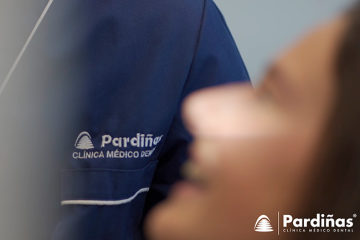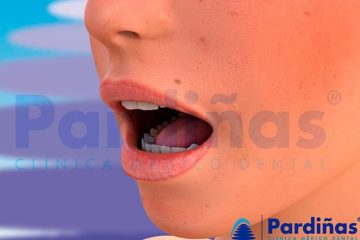Oral sex is a common practice in erotic encounters. However, if precautions are not taken, their practice can carry some risks, especially for oral health. In this post we talk about the relationship between oral sex and oral health.
- 1) Oral sex: a common practice in erotic encounters
- 2) Sexually transmitted diseases (STDs) and the mouth
- 3) What STDs can affect and be transmitted through the mouth?
-
4) How are sexually transmitted diseases treated?
- 5) Benefits of oral sex
1) Oral sex: a common practice in erotic encounters
About 90 % of sexually active adults claim to have had oral sex at least once. In addition, a third of teenangers between 15-17 years old also claim to have practiced it. This is proof of how common it is to have oral sex and, therefore, how important it is to be correctly informed about its prevention and risks.
1A) The mouth: a door to infectious diseases
Multiple infections, including sexually transmitted infections, have the mouth as a route of entry and/or spread. Anyone who is exposed to an infected sexual partner is at risk of contracting an STI in the mouth, throat, genitals, or anal area. The risk may depend on factors such as the type of infection, the type of sexual practice, exposure to bodily fluids, the frequency and diversity of sexual partners, the quality of oral and genital hygiene, or the use of protective measures. It is possible to contract an STI in the mouth from having oral contact with the genitals or anal area of an infected person. These infections can be present in several areas of the body at the same time.

1B) Is it easier to get an STI from oral or vaginal/anal sex?
There are not many studies that evaluate the risk of contracting an STI through the different routes of sex, with the exception of HIV. In addition, it is difficult to compare them since most of the people who have oral sex also do it vaginally and/or anally. Regarding HIV, the scientific literature has verified that the risk of contracting an HIV infection is lower while having oral sex (both practicing and receiving it) than with anal or vaginal sex. But this may be different for other infections that have not been as well studied.
2) Sexually transmitted diseases (STDs) and the mouth
If we talk about sexually transmitted diseases or STDs, this contact with body fluids becomes even more important. In many cases, the presence of wounds or ulcers in the mouth causes the fluids from the genitals of the sexual partner to come into contact with the body, developing a localized infection. This contact can also occur the other way around, that from a person's mouth is transmitted to the partner's genitalia.
2A) Symptoms of STDs in the mouth
There are multiple signs and symptoms of an active STD that can manifest on the tongue, lips, palate, throat ... such as:
- Sores or ulcers.
- Blisters.
- Redness of the oral mucosa.
- Inflammation of the lymph nodes.
- Pain and inflammation of the mouth.
- Pain and inflammation of the throat with difficulty swallowing.
- Fever.
- Loss of appetite.
- Secretion of pus.
- Appearance of red or white spots.
However, in many cases there are no obvious symptoms that show the presence of a disease. That is why it is important to take the necessary preventive measures and to know the state of oral and general health, both ourselves and our partner.

2B) What care must be taken when practicing oral sex?
To know our state of health it is advisable to carry out STD tests and periodic check-ups at the dentist, since in many cases it’s possible to detect these types of injuries and other potentially malignant ones in an early stage. When it comes to oral sex, it’s recommended the use of prophylactic devices, the most effective way to prevent this type of infection. In addition, it’s important to have very good oral and genital hygiene, which will reduce the risk of developing wounds, ulcers or infections.

3) What STDs can affect and be transmitted through the mouth?
The most common STDs that can affect and be transmitted through the mouth include herpes, human papillomavirus, chlamydia, syphilis, and gonorrhea.
3A) Herpes simplex virus (HSV-1) or cold sore
Herpes, known colloquially as cold sore, is a viral infection that affects a high percentage of the population. It is extremely contagious by close contact and can be transmitted through oral sex. HSV-2 is more related to genital lesions and HSV-1 to mouth lesions. Herpes produces small, fluid-filled blisters on the lips, gums, and palate. Symptoms may include fever that usually lasts several days and blisters that may take up to 3 weeks to fully heal. Once an episode of herpes infection has occurred, the virus remains inactive in nerve cells and can arise as another cold sore in the same place as before. Treatment is usually symptomatic with protective and anesthetic gels, although if detected at an early stage can be treated with antiviral drugs.
3B) Infectious mononucleosis
The most common cause of infectious mononucleosis is produced by the Epstein-Barr virus, which is from the herpesvirus family. The most common route of transmission is through saliva. It is estimated that more than 90% of the world's adult population has been infected by EBV and has developed antibodies, and it occurs mainly in childhood and adolescence. In children there are usually no symptoms, but in adolescents and adults it can cause fever, sore throat, pharyngitis, lymph node involvement, headache, etc. The incubation period is long, from 1 to 2 months, and the symptoms usually reach their greatest intensity after the first week. No specific treatment is usually required except symptomatic to manage pain. It usually evolves favorably and generates few complications.

3C) Cytomegalovirus (CMV)
Cytomegalovirus is the most common cause of congenital viral infection in humans and can also cause infectious mononucleosis. It can be transmitted through bodily fluids such as saliva, semen, vaginal secretions, or breast milk. Primary CMV infection usually occurs in adolescence, in connection with sexual transmission. After the primary infection, which usually occurs without symptoms, the virus remains in the body in a latent form and can be reactivated in cases of patients with low defenses or immunosuppressed. If it causes symptoms, in the mouth area it can produce ulcers that can last several weeks and usually appear on the palate, although they can appear in any mucous area of the mouth and throat. Salivary glands such as the parotid glands can also be affected and it can also cause gum problems such as gingivitis and periodontitis. Treatment usually requires administration of antiviral drugs such as ganciclovir or valganciclovir for a couple of weeks.

3D) Human papillomavirus
It’s one of the most common sexual diseases. In the United States, 14 million new cases are diagnosed each year. There are multiple strains of the HPV virus and several of them can affect the mouth and throat, producing lesions in the form of papilloma or warts. They often show no symptoms, and treatment is usually surgical excision. High-risk strains are associated with the development of oral and throat cancer.

3E) Syphilis
It’s a disease caused by the bacterium Treponema Pallidum, whose only natural reservoir is humans. The bacteria enter the body through wounds or cuts that may be in the mucosa from sexual contact. Immediately there is a local multiplication and invasion of the area. Usually the lesions in the mouth, called syphilitic chancre, appear after 1 month of incubation, and usually affect the lips and tongue. These sores are very contagious and often painful. Treatment is usually with antibiotics, and it is important to treat it in time, since it could evolve into secondary and tertiary syphilis, affecting other organs such as the heart and nervous system.

3F) Gonorrhea
Gonorrhea is a bacterial infection that can affect the mucous membranes of the mouth and throat. Sometimes it goes unnoticed because the symptoms are usually mild and can be mistaken for a common throat infection. If left untreated, it can lead to long-term problems such as infertility. Treatment is usually with antibiotics.
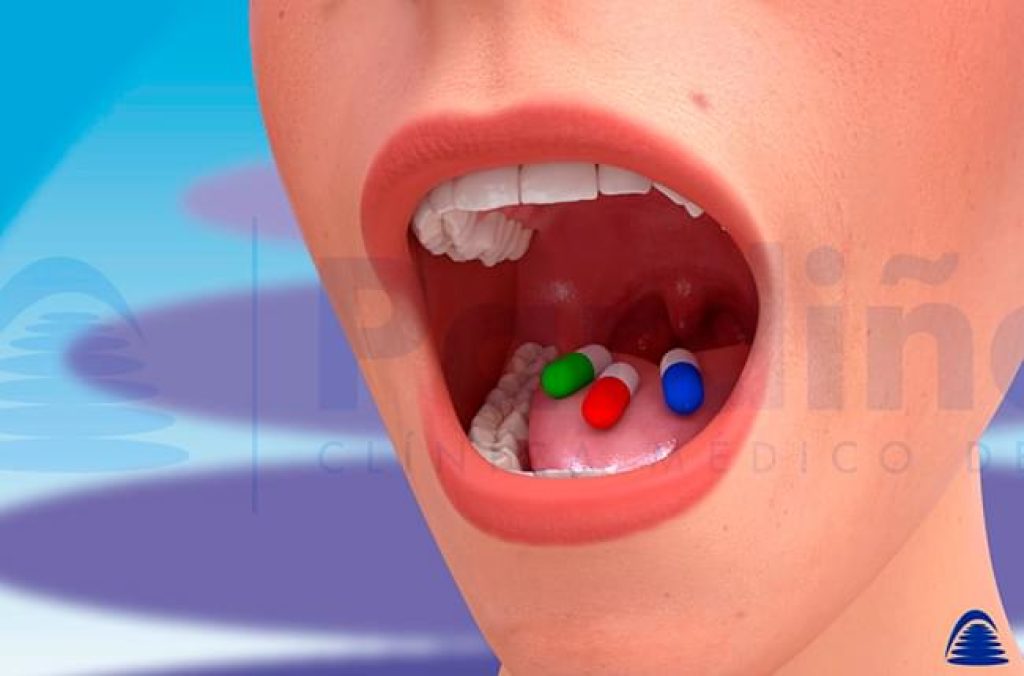
3G) Chlamydia
It’s a bacterial infection that can cause a sore throat, but it does not usually present symptoms, which may also go undetected. Like the rest of STDs, it is transmittable by contact with bodily fluids through oral sex. It is easily treated with antibiotics.
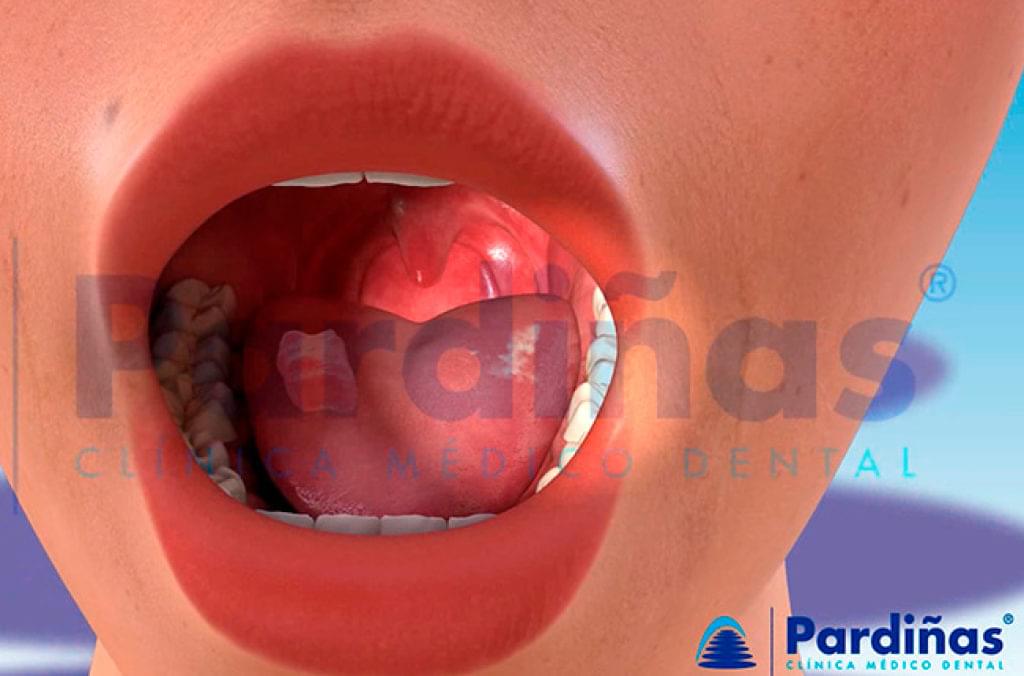
3H) HIV
It’s the virus that causes AIDS. It is contagious through contact with blood, semen, vaginal fluids, and breast milk; saliva has a minimal risk of infection. In the mouth it usually presents with the appearance of other lesions such as fungal infection or candidiasis, hairy leukoplakia, necrotizing gingivitis, and other types of viruses such as herpes. Current treatment includes antiretroviral therapy.
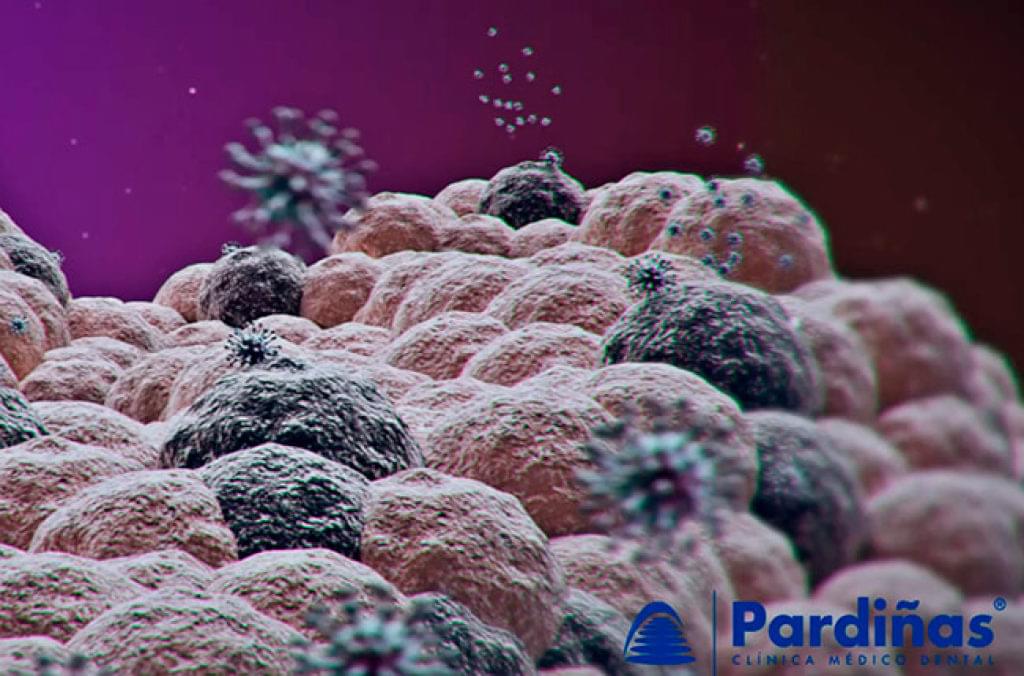
3I) Hepatitis, another sexually transmitted infection
Inflammation of the liver is known as hepatitis. This may be due to infections (viral or bacterial), autoimmune diseases or toxicity, as in the case of alcoholism. The most common oral manifestations of this infection are: xerostomia or dry mouth, bleeding gums, bad breath, jaundice, thrush, bleeding from oral tissues, lichen planus, leukoplakia, salivary gland involvement, and telangiectasia. The most common hepatitis viruses are:
3I) 1. Hepatitis A (HAV)
It is transmitted mainly through the digestive tract, due to the consumption of contaminated water or food that has been in contact with infected feces. Therefore, it can also be infected by performing oro-anal sexual practices. It usually has an incubation period of 2 to 6 weeks and the infection is usually mild and heals on its own, not requiring specific treatment. The hepatitis A vaccine may be recommended in patients with frequent anal sexual practices and in those infected with hepatitis B or C.
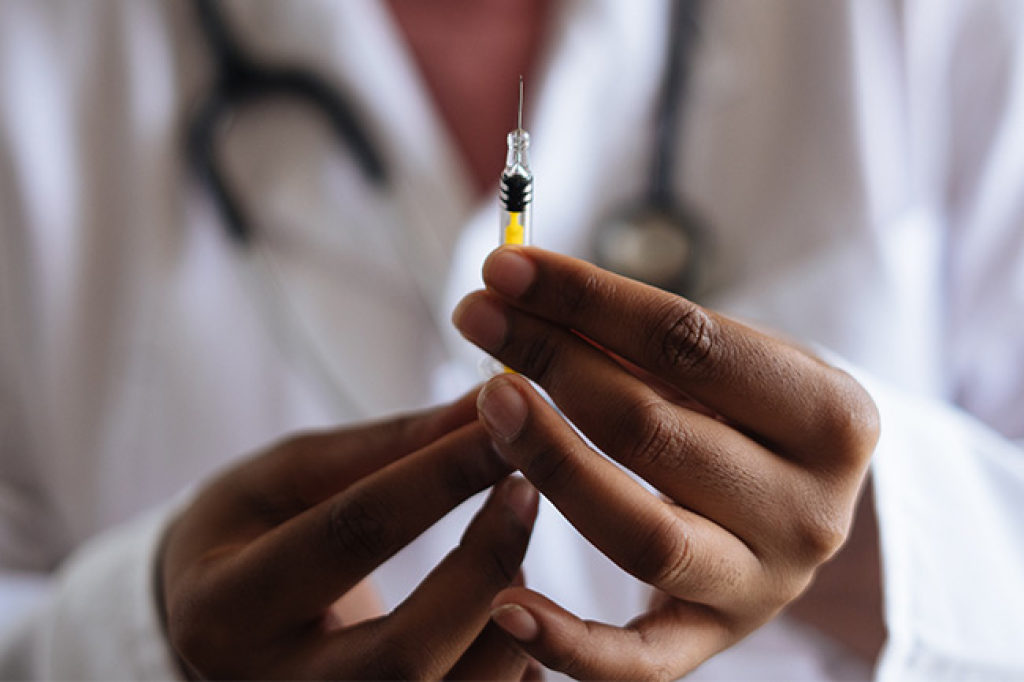
3I) 2.Hepatitis B (HBV)
Transmission usually occurs parenterally (shared use of syringes, being tattooed with non-sterile material, piercings...), by direct contact with body fluids (blood, saliva, semen or vaginal secretions) and from mother to child during childbirth. The incubation period is usually longer than 1-4 months, and it can manifest with fever, joint pain, weakness, yellowing of the skin, etc., although it can also occur without symptoms. It usually heals on its own, although in some cases the infection may become chronic and require treatment. In this situation, the person becomes a carrier, and therefore can be infected through unprotected sexual contact. The hepatitis B vaccine is usually mandatory and applied as early as childhood.
3I) 3. Hepatitis C (HCV)
It is estimated that 170 million people in the world have hepatitis C, being one of the most common causes of cirrhosis. The transmission mechanism is similar to that of B. Most infected people do not present symptoms, but on some occasions jaundice, fatigue, nausea, fever and general muscle aches may manifest, or with lichen planus or involvement of the salivary glands if we focus on the mouth. Acute symptoms appear 30-90 days after infection and, in some cases, do not require treatment because it is eliminated by the immune system itself. However, in a high percentage of cases the virus does not disappear and can become chronic. There is currently no vaccine for hepatitis C, but certain drugs have recently been discovered to treat it.

3J) Candidiasis: fungal infection
Candidiasis is an infection caused by the fungus Candida Albicans. This fungus is part of the normal vaginal flora of women, so it is not considered sexually transmitted, but in the face of certain imbalances such as increased acidity of the vaginal discharge, taking antibiotics, pregnancy... it can cause an excessive growth of Candida and symptoms develop. On the other hand, in men this fungus does not exist under normal conditions, so sexual transmission is the most frequent reason for its appearance. The most frequent symptoms are usually itching, redness, irritation, in the genital case whitish vaginal discharge and discomfort when urinating, inflammation of the glans with whitish areas; and in the case of appearing in the mouth, the appearance of a whitish layer on the mucous membranes that usually comes off when scraping. Treatment usually requires the administration of antifungal medication, either systemically or by rinsing, depending on the severity of the case and the affected area.
4) How are sexually transmitted diseases treated?
As we have already seen, the treatment will depend on the type of disease and its severity. In the case of the treatment of herpes HSV-1, it will be symptomatic, with antiseptic and anesthetic rinses to reduce the pain of the ulcers. The use of antiviral medications can be helpful if they are applied when the first symptoms appear. In cases of bacterial diseases such as syphilis or gonorrhea, the treatment will be with antibiotics.

5) Benefits of oral sex
Although oral sex has its contraindications, a series of benefits beyond pleasure are also attributed to it. Therefore, it can be a positive practice if the relevant precautionary measures are taken:
5A) Semen: an ally against pregnancy problems
Various studies suggest that certain semen components such as HLA (Human Leukocyte Antigen) may be a protective factor during pregnancy, reducing the risk of preeclampsia, a complication that can cause fetal loss. HLA are molecules that are located on the surface of most cells that are responsible for the immune response and allow us to defend ourselves against foreign agents. Exposure to paternal antigens in seminal fluid, both vaginally and orally, can favor maternal tolerance to the fetus, protecting it from rejection.

5B) The practice of oral sex can improve the mood
The hormones secreted during the practice of oral sex favor the relaxation of the body. In addition, semen contains numerous components such as serotonin, oxytocin, cortisol and melatonin, which are highly involved in mood and sleep regulation. Several studies indicate that these components have an antidepressant effect and promote sleep conciliation.

5C) The practice of oral sex improves physical condition
Sexual practices of any kind favor physical condition, reducing the risk of cardiovascular disease.
